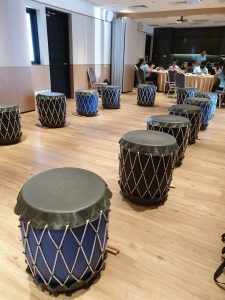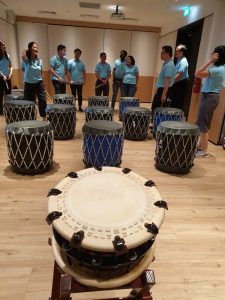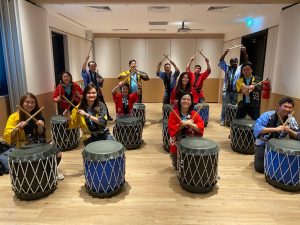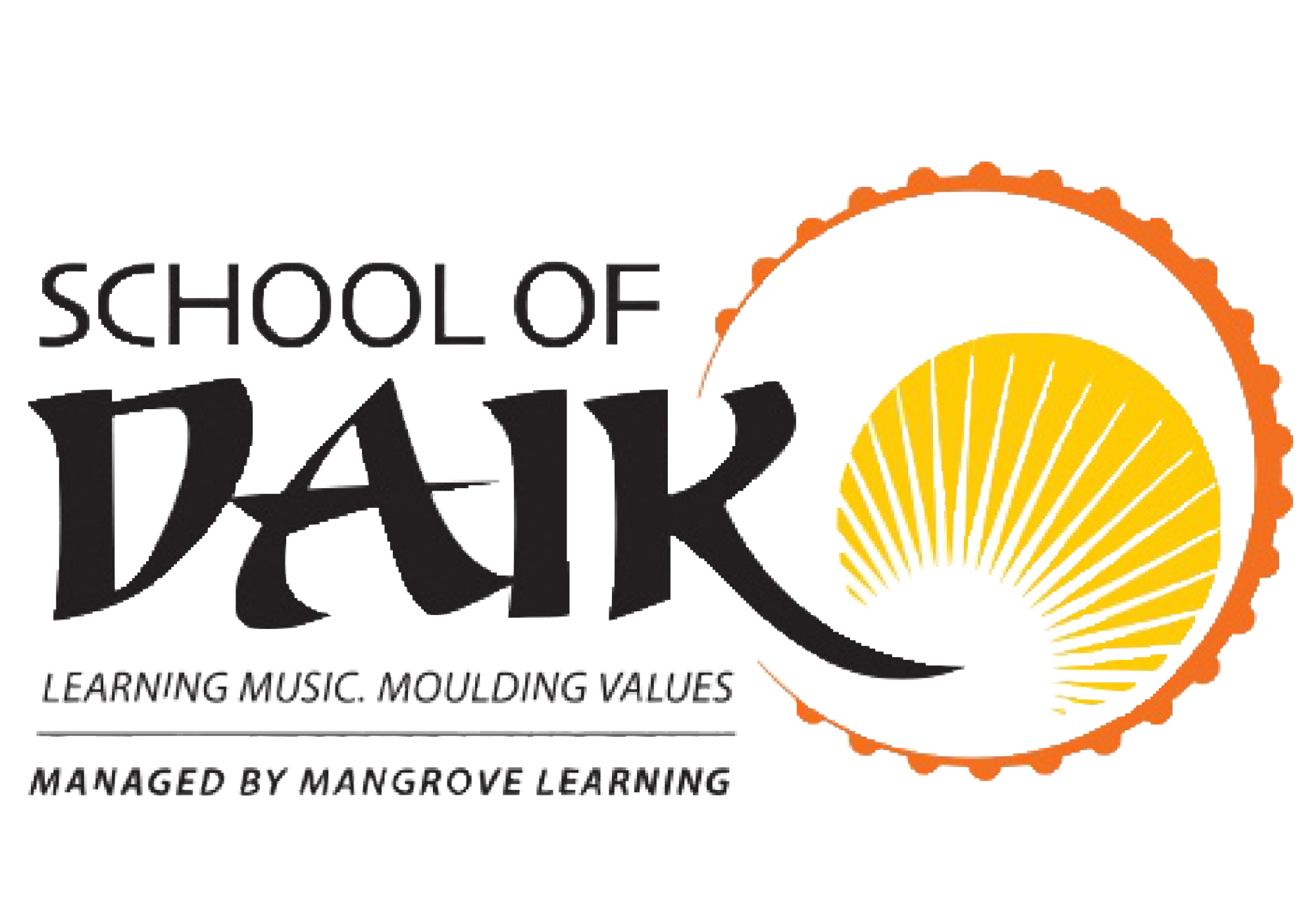A team-building activity is an essential element in increasing an organisation’s cohesiveness especially in my line of work, I’ve seen how workers from different levels of the organisation come together in one unison. Despite their age, job functions and roles, the Taiko drum somehow acts as an equaliser bringing all to the same level. In the process of drumming, we can see how the team members “calibrate” among themselves to achieve the end goal and in our case is a 3 mins Taiko drumming performance!
Recently, we conducted our signage programme ‘Taiko4Team” for 13 staff members from Lab Science Solution Pte Ltd. It was a small yet bonded team, just as my assistant trainer and I alighted from our van at the drumming venue we could hear the team’s laughter from far. That was a sign of positive spirit and energy for us! Indeed it was one of our most enjoyable corporate training sessions!

The team of 13 was first taught on a brief history of Taiko drum and the three simple steps to start Taiko drumming. These include the standing posture, holding of bachi (drumsticks) and how to hit on the Taiko drum surface. Soon, it was the relationship-building phase, which we played call & respond rhythm with the participants, these rhythms were meant to be simple and easy to encourage participation and bring down the learning barrier of Taiko drumming.
Very quickly, the participants got comfortable with the drums and most importantly, among themselves. The next phase was “serious business” as the trainers demonstrate and train the participants to a Taiko song “Sound of Okinawa”. The song consists of five sets of rhythms, ranging from easy to a challenging rhythm combination. At this phase, you can identify the fast learners and those who need more time to pick up the rhythm. As a trainer, it was our job to remind our participants always that Taiko drumming is a team art, it doesn’t matter who is the best or faster drummer, but if one member is slow, we have to adjust the tempo of the song slower, to allow that member to catch up. It is also at that moment, we relate back to their daily life, their office moments.

Towards the end of the programme, the students have tasked to curate a 3 mins performance as well as for a video recording as their memento. It was interesting to see the dynamic of the team as you identify the natural leaders in the group and how the group reorganises their resources and manpower in the performance. Many times, most of the clients were not able to fulfil the 3 mins performance requirement. Still, it was a reflection point for them as they understand the Chinese saying of “台上一分钟,台下十年功” interpreted as – One minute of performance on the stage is attributed to ten years’ practice off the stage.

Many clients shared with us the concerns of team-building activity, and we concluded that Taiko team-building is a low risk and suitable for all age activity. It is true as we see ourselves training people from 5 years old to 92 years old! Whenever a person starts Taiko drumming, he or she behaves like a kid again! Taiko a true equaliser!
If you are looking for low risk and high engagement team-building activities why not give it a try to Mangrove Learning’s Taiko4Team programme! Do not hesitate to contact us for any inquiries!
The final showcasing the performance of Team LSS, after 2 hours of practice only!
~Junyong [sales@mangrovelearning.com]

